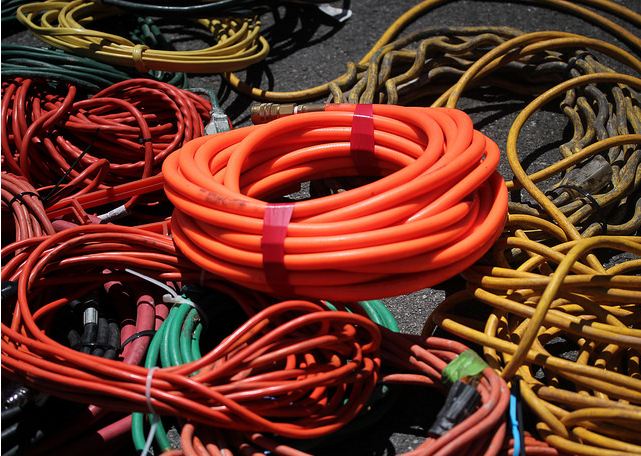There are many tools we have lying around the house that have a lot of uses other than what they are intended for. An extension cord is one of those items. When SHTF we will need certain supplies, but we may not always have the right tool or supply on hand. Knowing how to use whatever we have at hand will be the key to our survival. So let's learn about 8 uses for an extension cord other than what it is intended for:
1 – Double Up
Take a THIN extension cord and cut it in half; you’ll now see two fibers running through the inside of the cord. By pulling these two strands away from each other, you’ll not only have double the cordage you did before, but you’ll be doing so while still insulating those fibers in the cord.Note: Make sure to use the cheaper, thinner extension cords for this, rather than the bigger and bulkier ones.
2 – Down To The Wire
Once you’ve split the THIN extension cord into two individual cords (as described in #1), you can then take your knife and chip away at the outside insulating cord until you’ve exposed the fibers.By twisting these wire fires together like a rope, you can create a thin but very strong cord that will help you fix a ton of different survival gear (a couple examples of these items are shown later on).
However, if you’re able to remove and separate the individual wire fibers, these will give you WAY more cords to work with in an emergency. These tiny fibers are great when you need a super thin but durable strand to fix more delicate survival tools, such as those listed in #3.
Note: Again, make sure you’re using the cheaper, thinner extension cords for this; not the big heavy ones.
3 – Fix Your Glasses
By getting down to the individual wire fibers in your thin extension cord (as described in #2), you can use these to secure the nose piece or the stems of your glasses when they break off. This could really help you out if you’re visually impaired and need to see where you’re going.4 – Siphon Liquids
Using the big, heavier extension cords can also be beneficial for survival. For example, if you cut this cord in half, you’ll probably see three copper cords tucked inside of the outer tubing.If you’re able to remove these inner cords (and save them for other uses), you can use the exterior cord to siphon liquids, such as gasoline from a car’s tank.
5 – Attach Extra Supplies To Your Bug Out Bag
Let’s imagine you’ve stocked your bug out bag to the brim, and yet there’s a few extra items you need to bring with you. With the help of extension cord, you can simply wrap it around the item, and attach it securely to your bag.6 – Repair A Broken Strap
Now that you’ve successfully loaded up your bug out bag, let’s say that you accidentally overloaded it, and now your bag’s strap has broken in two.Well, this is where those fibers from #2 come in. By twisting the fibers from a thin extension cord together to form a rope, this will give you a thin but strong piece of material to tie the two pieces of strap back together.
This is especially handy, since these fibers are much thinner and are more flexible than a bulky cord.
7 – Make A Handle For A Bucket
Large buckets can be great for storing supplies, but if they don’t have a handle attached they can be a real pain to carry.Fix the problem by making your own handle out of extension cord. Simply empty the bucket and drill a hole through either side, near the top (make sure these holes are large enough for the cord to fit through).
Next, push each end of the extension cord through a hole, and tie off the ends on the inside of the bucket. In just a couple minutes you’ll have a strong, durable handle to help you carry supplies.
8 – Lower Survival Supplies
If one of the preppers in your camping/bug out group falls into a ravine or pit, you may find yourself needing to lower supplies to them to help them get out (or to help them stay fed/hydrated while you call for help). You can accomplish this with the help of an extension cord.Use an extra long, big, bulky extension cord (so not one of those thin, cheap ones) to tie around the handle of a heavy duty bucket or basket. Then fill the container with survival tools/supplies, and gently lower it down.
Hopefully, these tips have convinced you that you should have a couple of extension cords at your bug out location, and perhaps even have a shorter one in your bug out back. You never know when you might need one during your next wilderness trek. That's why you should keep a couple spares in your shelter. Even if you don't have one when a collapse happens at least you'll know how to properly utilize one, which is important.
For additional survival tips and tricks, check out Survival Frog Blog.
Featured Image via Flickr
